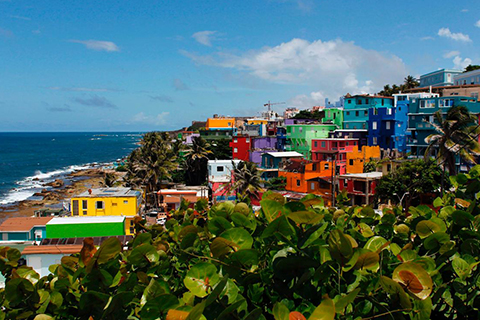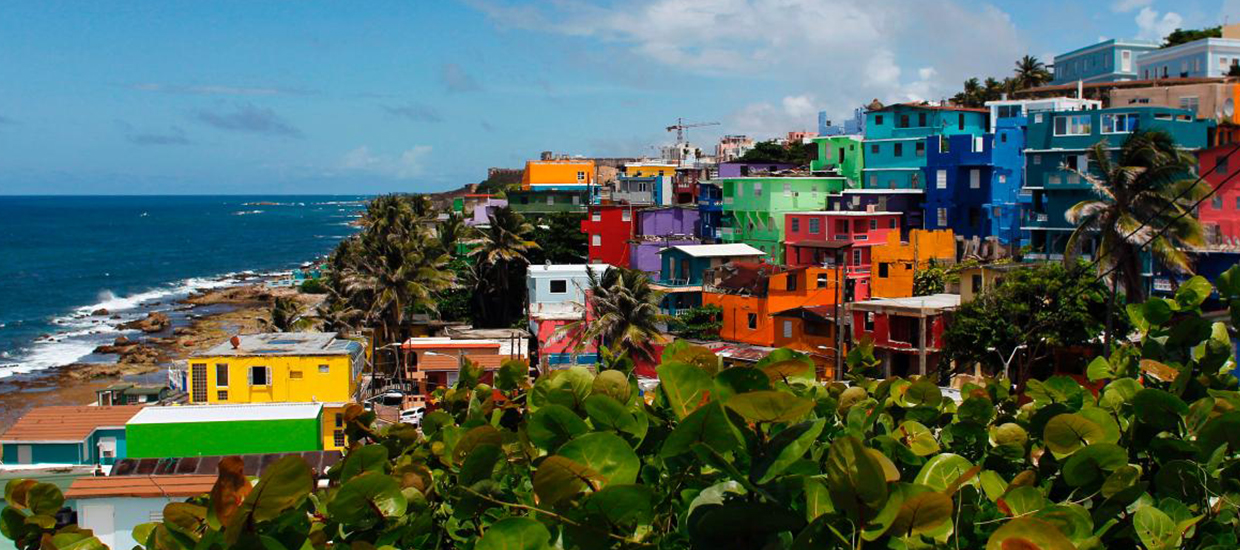Yolanda Martinez-San Miguel
Professor of Modern Languages and Literatures and Martha S. Weeks Chair in Latin American Studies
William Pestle
Associate Professor of Anthropology and Director of Latin American Studies
Manuel Riviera
Assistant Professor of Mathematics
November 13, 2017
The devastation of Puerto Rico by Hurricane Maria has caused a humanitarian crisis on the island. Puerto Rico’s woes, however, began way before the 2017 hurricane season — the storm only exacerbated an already volatile situation on the island. Professors Yolanda Martínez-San Miguel (Professor of Modern Languages and Literatures and Martha S. Weeks Chair in Latin American Studies), Will Pestle (Associate Professor of Anthropology and Director of Latin American Studies), and Manuel Rivera (Assistant Professor of Mathematics) placed the current crisis within its historical context and identified other “storms” which were brewing and led to a “perfect storm” on the island. Puerto Rico has been suffering from five categories of “storms”:
- Political Storm
- Economic Storm
- Psychological Storm
- Hurricane Maria itself
- Aftermath – Storm after the Storm
The political and economic storms are tied to the island’s colonial condition of not having autonomy. Over the last century Puerto Rico did not develop a self-sustainable economy because of policies of “intentional dependency” through which the locally-based economy was decimated and the island made import reliant. The speakers discussed how US-style capitalism made Puerto Ricans agents of consumption rather than production, as evidenced by the number of Walmart stores located on the island. During the 1990s and early 2000s, the phasing out of Section 936 of the US tax code, which gave incentives for US corporations to operate subsidiaries on the island, helped create Puerto Rico’s fiscal crisis. The recession that began in 2006 resulted in high unemployment, leading to massive migration over the last ten years. As the tax base diminished, Puerto Rico’s elected officials borrowed funds and also issued triple tax-exempt bonds. All of these factors contributed to the debt crisis from which Puerto Rico had been suffering prior to the landfall of Hurricane Maria.
The psychological storm has been the constant propaganda that austerity measures on the island are deserved, along with the false solutions and myths propagated by politicians that statehood is a possibility and will solve all of Puerto Rico’s problems. President Trump’s tweets also add to the psychological component in seeming to blame Puerto Ricans for the current crisis. The natural storms, Hurricanes Irma and Maria, have caused not only devastation on the island, but also outbreaks of disease and an increase in suicide rates, particularly among the elderly. At the time of the teach-in, nearly two months after Maria, an estimated sixty percent of Puerto Ricans still had no power and many lacked access to clean water. There are signs of the arrival of “disaster capitalism” in the wake of the storm, with a particular focus on the energy sector. The confluence of these varied storms has left Puerto Rico in an even more vulnerable condition as the island moves towards recovery and reconstruction.





